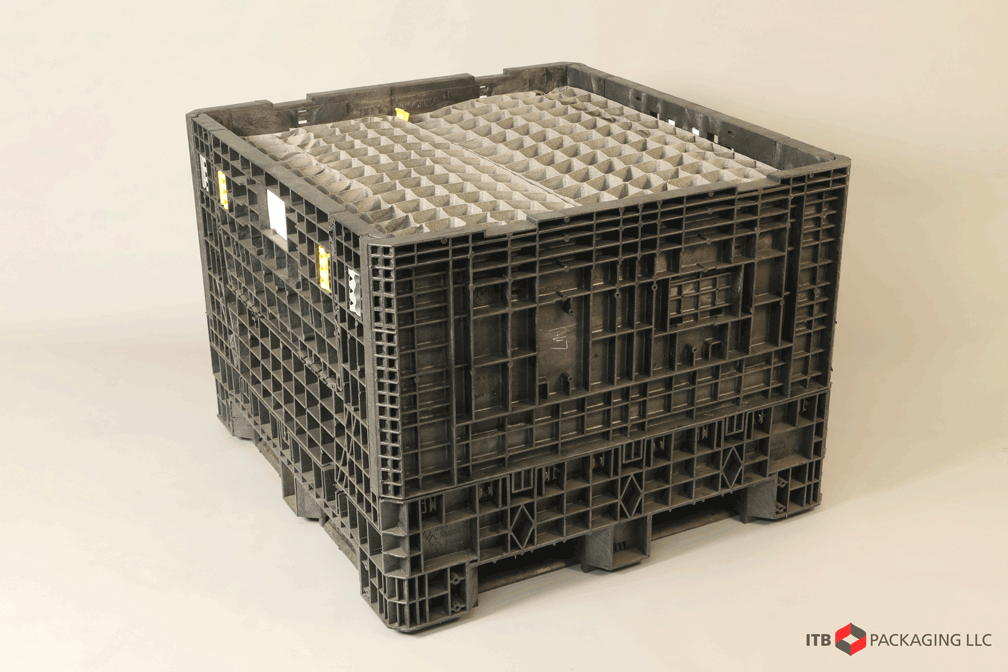In the complex world of supply chain management, every element plays a crucial role in ensuring the smooth and efficient flow of goods. Often, the unsung hero of this intricate system is packaging. This article delves into the multifaceted role of packaging in supply chain management, exploring how it safeguards products, fosters efficiency, and even contributes to environmental responsibility. We’ll uncover how effective packaging acts as a shield against damage, facilitates efficient logistics, and even influences transportation costs. By understanding the various functions and innovative solutions available, businesses can leverage packaging as a strategic tool to optimize their supply chain, minimize costs, and enhance customer satisfaction.
The Role of Packaging in Supply Chain Management
- Understanding the Pivotal Role of Packaging in Supply Chain Management
- Efficiency Gains Through Smart Packaging Solutions in Supply Chain Management
- Impact of Packaging on Transportation Costs in Supply Chain Management
- Enhancing Inventory Management with Effective Packaging
- Sustainable Packaging Practices for Eco-Friendly Logistics
Understanding the Pivotal Role of Packaging in Supply Chain Management
Packaging stands as a linchpin in the seamless operation of supply chain management, playing a crucial role in ensuring the secure and safe transit of products from origin to destination. Its significance spans from shielding delicate electronics to preserving food freshness, acting as a frontline defense against damage, contamination, and spoilage during handling, storage, and transportation. This safeguarding guarantees that products reach end consumers in impeccable condition, upholding their intended quality and integrity throughout the supply chain journey.
Packaging, acting as a protective shield, fends off various external threats that could jeopardize product quality:
- Moisture Resistance: Utilizing waterproof materials becomes imperative to prevent water damage, particularly for sensitive products such as electronics or pharmaceuticals.
- Temperature Fluctuations: Insulated packaging emerges as a necessity to shield temperature-sensitive items like food or pharmaceuticals during transportation.
- Physical Shocks: The incorporation of padding and secure fastening mechanisms becomes paramount to counteract damage caused by bumps and vibrations during handling.
Going beyond mere protection, packaging emerges as a vital information conduit, displaying critical details essential for effective supply chain management:
- Clear Contents Labeling: Facilitates easy identification of products, forming a fundamental aspect of efficient inventory management in the supply chain.
- Handling Instructions: Provides specific instructions to ensure proper care and prevent mishandling, contributing to the overall smooth flow of the supply chain.
- Expiration Dates: Crucial information for perishable goods and consumer safety, influencing inventory management practices.
Understanding the multifaceted role of packaging is pivotal for businesses aiming to optimize their supply chain efficiency.

Efficiency Gains Through Smart Packaging Solutions in Supply Chain Management
The advent of smart packaging solutions is revolutionizing supply chain management by integrating technologies like barcodes, RFID tags, and sensors directly into the packaging. These advancements usher in a new era of efficiency gains:
- Real-time Tracking and Monitoring: Empowers companies to track product location and condition in real-time, reducing the risk of stockouts and enhancing overall visibility in supply chain operations.
- Automated Inventory Management: Smart tags facilitate automated inventory counts, streamlining the utilization of storage space and contributing to effective supply chain management.
- Route Optimization: Leveraging real-time data allows for efficient route planning, minimizing transportation costs and fuel consumption, a critical aspect of supply chain optimization.
By harnessing the power of smart packaging, companies can streamline their supply chain operations, minimize costs, and elevate customer satisfaction through enhanced delivery experiences.

Impact of Packaging on Transportation Costs in Supply Chain Management
Packaging exerts a significant influence on transportation costs, a key determinant in effective supply chain management. Consider the following factors:
- Size and Weight: Bulky or heavy packaging diminishes the number of products that can be accommodated on a truck or container, leading to elevated shipping costs per unit. Decreasing DIM weight can significantly lower your shipping cost.
- Design Optimization: Crafting packaging to be compact and lightweight becomes instrumental in maximizing transportation capacity and mitigating costs in the supply chain.
- Material Selection for Durability: Choosing robust materials minimizes the risk of damage during transport, safeguarding products and preventing the need for costly replacements and returns.
Strategic packaging design, with a keen eye on transportation efficiency, emerges as a cornerstone for effective cost management in supply chain logistics.

Enhancing Inventory Management with Effective Packaging
Effective packaging extends its impact to greatly enhance inventory management within supply chain operations.
- Optimized Storage and Handling: Packaging designed with consideration for efficient storage and handling, such as ITB Packaging’s, can significantly contribute to the optimization of warehouse space utilization.
- Standardization for Efficiency: Utilizing standardized packaging sizes and shapes enables companies to maximize available storage space and reduces the time and effort required for inventory management.
- Facilitating Identification: Packaging that allows for easy identification and counting of products serves to improve inventory accuracy, minimizing errors in supply chain operations.
Efficient inventory management, facilitated by effective packaging, becomes a catalyst for improved demand forecasting, reduced stock outs, and enhanced overall supply chain efficiency.

Sustainable Packaging Practices for Eco-Friendly Logistics
In recent years, there has been a growing emphasis on sustainable packaging practices in supply chain management to foster eco-friendly operations.
- Minimizing Environmental Impact: Sustainable packaging strives to minimize the environmental footprint of packaging materials and reduce waste generation.
- Strategies for Sustainability: Implementing strategies such as using recyclable or biodegradable materials, reducing packaging size and weight, and adopting designs that maximize resource efficiency contributes to sustainable supply chain practices.
- Benefits for Companies: Adopting sustainable packaging not only aligns with environmental goals but also enhances brand image and fosters customer loyalty, a critical aspect of modern supply chain management.

Conclusion
Strategic packaging assumes a pivotal role in contemporary supply chain management, acting as a guardian for product safety, an optimizer for efficiency, and a contributor to sustainable practices. As businesses delve into understanding the various facets of packaging and embrace new technologies, they can forge a resilient and cost-effective supply chain while aligning with the evolving environmental consciousness. The evolving landscape of logistics will undoubtedly witness innovative packaging solutions playing an even more substantial role in shaping the future of efficient and sustainable product delivery within the broader realm of supply chain management.
